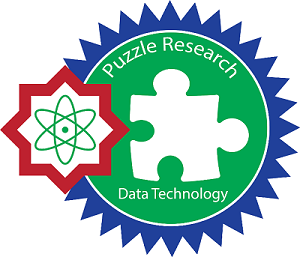ADDITIONAL MENU
Implementation of Decision Tree Algorithm Machine Learning in Detecting Covid-19 Virus Patients Using Public Datasets
Abstract
The advancement of AI (Artificial Intelligence) technology has been widely implemented in numerous sectors of daily life. Machine Learning is one of the subfields of Artificial Intelligence. Using statistics, mathematics, and data mining, machine learning is developed so that machines may learn by assessing data without being reprogrammed. At this time the world is on alert for the spread of a popular virus, the corona virus. Coronaviruses are part of a family of viruses caused by diseases ranging from the flu. The disease caused by the coronavirus is known as Covid-19. Therefore, to help identify whether a somebody has coronavirus disease based on certain symptoms, a model is created that can classify people with the covid-19 virus using machine learning. The classification methods utilized in this study are decision trees and large-scale machine learning projects. The study employed Python 3.7 as its programming language and PyCharm as its Integrated Development Environment (IDE). Based on the results, the accuracy rate as expected after conducting various trials is 99%.
Keywords
Decision Tree Algorithm, Machine Learning, Covid-19 Virus, Classification, Public Datasets
Full Text:
PDFReferences
Alvina Felicia Watratan, Arwini Puspita. B, and Dikwan Moeis, “Implementasi Algoritma Naive Bayes Untuk Memprediksi Tingkat Penyebaran Covid-19 Di Indonesia,” J. Appl. Comput. Sci. Technol., vol. 1, no. 1, pp. 7–14, 2020, doi: 10.52158/jacost.v1i1.9.
E. Supriatna, “Wabah Corona Virus Disease (Covid 19) Dalam Pandangan Islam,” SALAM J. Sos. dan Budaya Syar-i, vol. 7, no. 6, 2020, doi: 10.15408/sjsbs.v7i6.15247.
R. Rafiska, S. Defit, and G. W. Nurcahyo, “Analisis Rekam Medis untuk Menentukan Pola Kelompok Penyakit Menggunakan Algoritma C4.5,” J. RESTI (Rekayasa Sist. dan Teknol. Informasi), vol. 2, no. 1, pp. 391–396, 2018, doi: 10.29207/resti.v2i1.275.
A. Mujahidin and D. Pribadi, “Penerapan algoritma C4 . 5 untuk diagnosa penyakit pneumonia pada anak balita berbasis mobile,” J. Swabumi, vol. 5, no. 2, pp. 155–161, 2017, [Online]. Available: https://ejournal.bsi.ac.id/ejurnal/index.php/swabumi/article/view/2523.
M. A. Al Karomi, “Classification of Covid-19 Survillance Datasets using the Decision Tree Algorithm,” Jaict, vol. 6, no. 1, pp. 44–49, 2021, [Online]. Available: https://jurnal.polines.ac.id/index.php/jaict/article/view/2896.
Y. Fitriani, S. Defit, and G. W. Nurcahyo, “Prediksi Hasil Belajar Siswa Secara Daring pada Masa Pandemi COVID-19 Menggunakan Metode C4.5,” J. Sistim Inf. dan Teknol., vol. 3, 2021, doi: 10.37034/jsisfotek.v3i3.149.
R. Pakpahan and Y. Fitriani, “Analisa Pemafaatan Teknologi Informasi Dalam Pemeblajaran Jarak Jauh Di Tengah Pandemi Virus Corona Covid-19,” JISAMAR (Journal Inf. Syst. Applied, Manag. Account. Researh), vol. 4, no. 2, pp. 30–36, 2020.
M. D. Ruhamak and E. H. Syai’dah, “Pengaruh Word Of Mouth, Minat Konsumen Dan Brand Image Terhadap Keputusan Konsumen (Studi Pada Pelajar Lembaga Kursus Di Area Kampung Inggris Pare),” Ekonika J. Ekon. Univ. kadiri, vol. 3, no. 2, p. 14, 2018, doi: 10.30737/ekonika.v3i2.186.
Z. Zahrotunnimah, “Langkah Taktis Pemerintah Daerah Dalam Pencegahan Penyebaran Virus Corona Covid-19 di Indonesia,” SALAM J. Sos. dan Budaya Syar-i, vol. 7, no. 3, pp. 247–260, 2020, doi: 10.15408/sjsbs.v7i3.15103.
S. Syafrida and R. Hartati, “Bersama Melawan Virus Covid 19 di Indonesia,” SALAM J. Sos. dan Budaya Syar-i, vol. 7, no. 6, pp. 495–508, 2020, doi: 10.15408/sjsbs.v7i6.15325.
I. Sutoyo, “Implementasi Algoritma Decision Tree Untuk Klasifikasi Data Peserta Didik,” J. Pilar Nusa Mandiri, vol. 14, no. 2, p. 217, 2018, doi: 10.33480/pilar.v14i2.926.
A. Ashari, “Paper_5-Performance_Comparison_between_Naïve_Bayes.pdf,” Int. J. Adv. Comput. Sci. Appl., vol. 4, no. 11, pp. 33–39, 2013.
D. R. Amancio et al., “A systematic comparison of supervised classifiers,” PLoS One, vol. 9, no. 4, 2014, doi: 10.1371/journal.pone.0094137.
S. N. Hiadayat, A. R. I. Utami, and ..., “Penentuan Parameter Kinerja Bangunan Dengan Metode Inverse Modeling Menggunakan Machine Learning,” eProceedings …, vol. 7, no. 1, pp. 1214–1220, 2020.
J. Eska, “Penerapan Data Mining Untuk Prediksi Penjualan Wallpaper Menggunakan Algoritma C4.5,” vol. 2, 2018, doi: 10.31227/osf.io/x6svc.
DOI: http://dx.doi.org/10.24014/ijaidm.v5i1.17054
Refbacks
- There are currently no refbacks.
Office and Secretariat:
Big Data Research Centre
Puzzle Research Data Technology (Predatech)
Laboratory Building 1st Floor of Faculty of Science and Technology
UIN Sultan Syarif Kasim Riau
Jl. HR. Soebrantas KM. 18.5 No. 155 Pekanbaru Riau – 28293
Website: http://predatech.uin-suska.ac.id/ijaidm
Email: ijaidm@uin-suska.ac.id
e-Journal: http://ejournal.uin-suska.ac.id/index.php/ijaidm
Phone: 085275359942
Journal Indexing:
Google Scholar | ROAD | PKP Index | BASE | ESJI | General Impact Factor | Garuda | Moraref | One Search | Cite Factor | Crossref | WorldCat | Neliti | SINTA | Dimensions | ICI Index Copernicus
IJAIDM Stats










